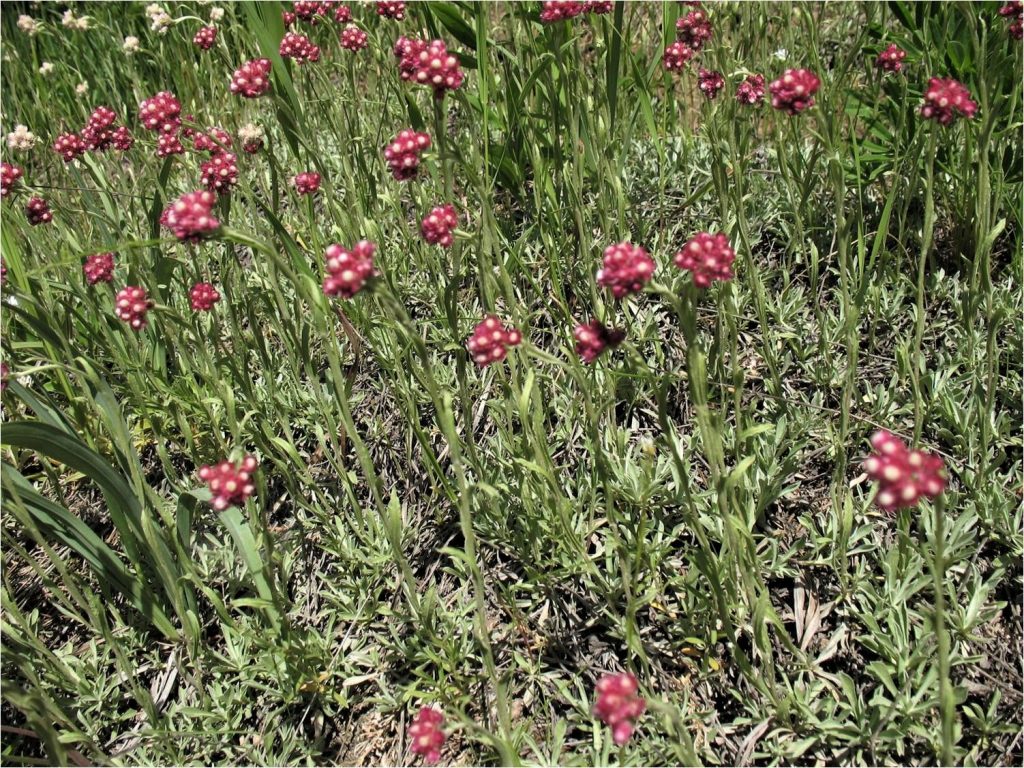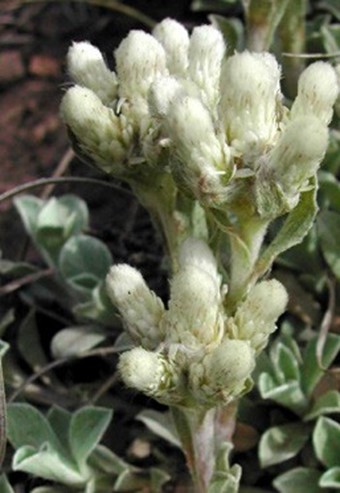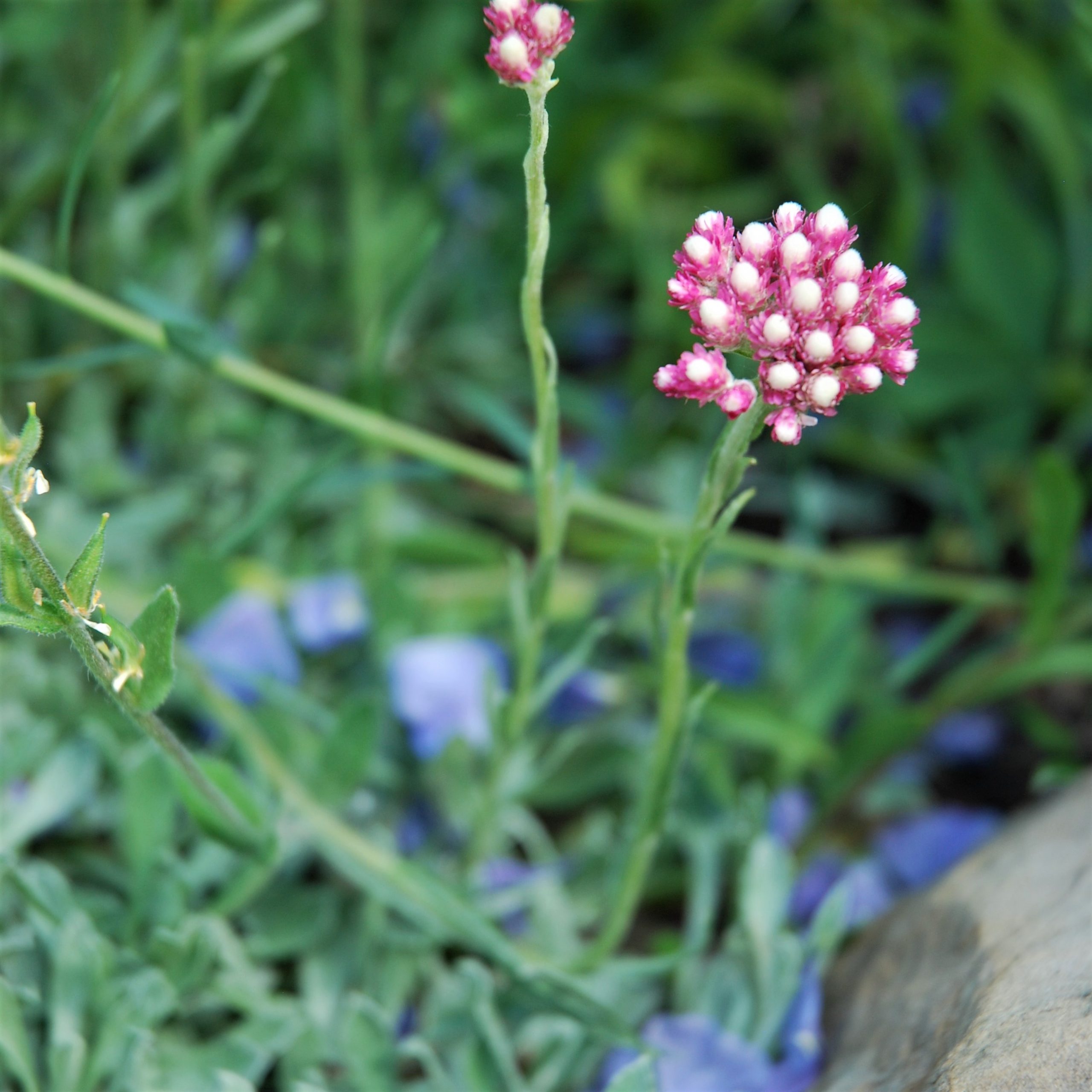This article, written by Dr. Al Fedkenheuer, first appeared in the Calgary Horticultural Society (Calhort) publication Calgary Gardening in 2013. It has been republished with permission and edited for clarity.
Calhort members receive full access to Calgary Gardening archives. To learn more visit www.calhort.org/
If you are looking for a native plant to use as low growing ground cover, this genus in the sunflower family is an excellent choice. This is one of the more difficult plant genera in which to differentiate various members as there are 14 species identified in Flora of Alberta (originally published by E.H. Moss and revised by J.G. Packer in 1983). This article introduces two of them: Antennaria parvifolia, which may also be called Antennaria nitida (White Pussytoes, Small-leaved Pussytoes, or Small-flowered Everlasting), and Antennaria rosea (Rosy Pussytoes or Rosy Everlasting). This does not mean the other species should not be used, it just means I have limited space in this article. The name “Pussytoes” comes from the impression that the flower heads resemble an upside-down cat’s paw.
Rosy Pussytoes

Rosy Pussytoes (Antennaria rosea) is also a mat-forming species but doesn’t hug the ground as tightly as Small-leaved Pussytoes and has leaves that are somewhat larger and more pointed. The rosettes of densely white, woolly basal leaves are under 3 cm in height with flower stalks of 15 to 20 cm in height. There are a few small leaves on the flower stalk. The flower heads are in a cluster but instead of the white, translucent bracts of Small-leaved Pussytoes, Rosy Pussytoes have bracts that are pinkish at the tips. It is an excellent ground cover plant and attractive in rock gardens when flowering–and after–with fluffy seed heads. Propagation is as above. This species is drought tolerant and grows well with medium soil moisture in full to partial sun on a variety of soil types. Good topsoil is not required to grow either species.
White Pussytoes

White Pussytoes (Antennaria parvifolia) can provide an excellent low-growing ground cover in a wildflower or rock garden. It has small greyish leaves that hug the ground, generally only getting 1 to 3 cm tall, while the flower stalks range from 10 to 25 cm tall. The flower stalks grow from greyish basal rosettes of leaves and have a cluster of small, whitish flower heads which appear in June-July, attracting bees and butterflies. The fluffy seed head is visually attractive and is present for up to a month after flowering. This species forms dense mats and expands via creeping leafy branches (stolons) which take root and develop new plants. Plants can be divided or started from seeds collected when ripe. Store the seeds in a paper bag in your garage or basement and start indoors in pots or direct seed outside. Cover very lightly with soil. Small-leaved Pussytoes love full sun but do well in partial sun too. It is drought tolerant and widespread in Alberta and well adapted to the harsh climate in Calgary.

